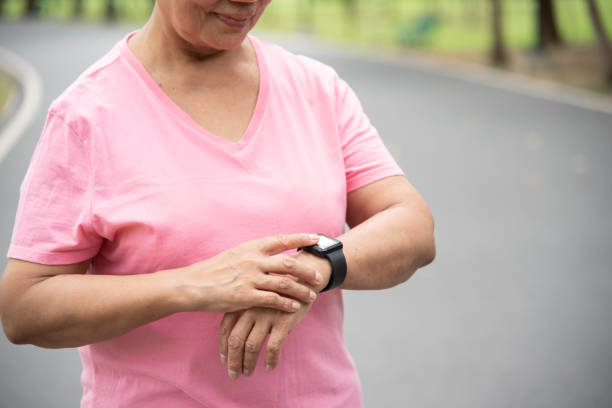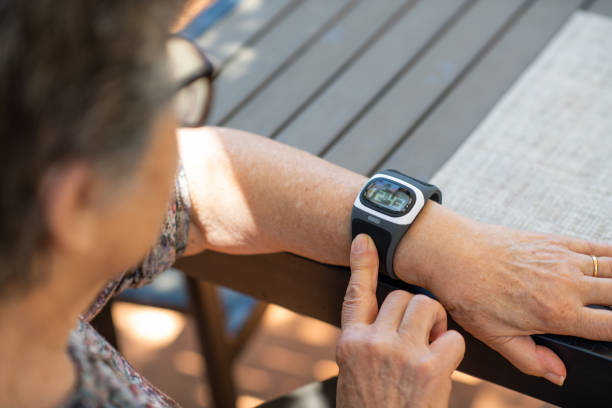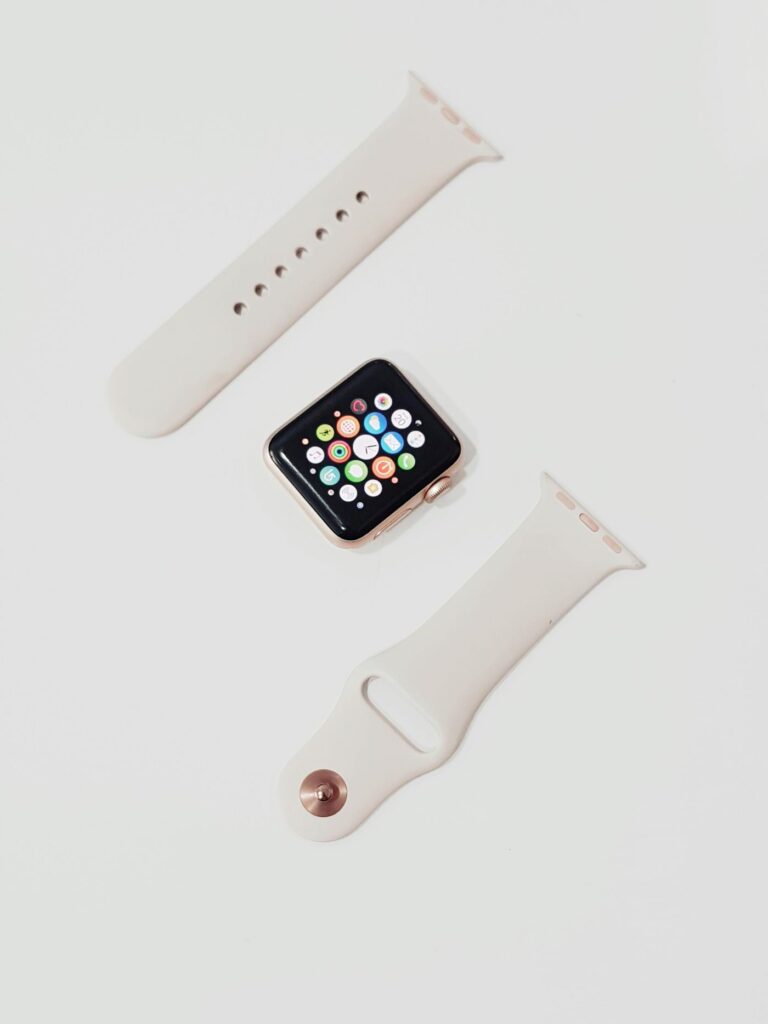Fitness Gadgets
How Do Bio Wearables Benefit Seniors
As we become older, our bodies change, and our health becomes more important. Fortunately, technology improvements have enabled elders to monitor their health and well-being using bio wearables. Wearable technology is gaining popularity among seniors because it provides a variety of benefits that can assist improve their quality of life.
Bio wearables are devices that are worn on the body and used to measure and monitor physiological functions such as heart rate, blood pressure, and sleep cycles. These devices can offer elders with important health information, allowing them to make more educated lifestyle and healthcare choices. For example, elderly can utilize bio wearables to monitor their physical activity levels, allowing them to stay active and fit. Wearables can also help seniors notice early warning signals of health problems and seek medical assistance before they deteriorate.
In addition to monitoring health, bio wearables can assist elders stay in touch with their loved ones and healthcare providers. Wearables can be used to alert family members or caretakers in the event of an emergency, ensuring that seniors receive timely medical care. Furthermore, healthcare practitioners can use the data acquired by bio wearables to remotely monitor their patients, resulting in more personalized and efficient care. Overall, bio wearables provide a variety of benefits that can help seniors live healthier and more happy lives.
The Role of Wearables in Monitoring Senior Health
As we get older, it becomes more necessary to manage our health. Wearables provide a handy and effective method for doing so. In this part, we’ll look at the numerous ways wearables might help seniors.
Continuous Health Tracking
Wearables can enable continuous health tracking, allowing seniors to check their condition in real time. This is especially beneficial for people with chronic diseases like diabetes or hypertension. Wearables, which track metrics such as blood pressure and glucose levels, can help seniors better manage their diseases and make educated health decisions.

Early Detection of Chronic Diseases
One of the most significant advantages of wearable devices is their capacity to detect chronic diseases early on. Wearables, for example, can monitor heart health and detect anomalies that could lead to a heart attack. By spotting these problems early on, seniors can seek medical attention before the disease worsens.
Managing Specific Conditions
Wearables can also help to control specific conditions. For example, some wearables are intended to assist elderly in managing their drug schedules. Others can observe sleep habits and offer suggestions on how to enhance sleep quality. Wearables can help seniors better manage their health by giving individualized insights and advice.
Finally, wearables can be an important tool for monitoring senior health. Wearables provide a variety of benefits for seniors, including continuous health tracking and early diagnosis of chronic conditions.
Improving Daily Life and Independence
Wearable bio technologies have the potential to improve seniors‘ quality of life and independence in a variety of ways. These technologies can help elders keep active, track their health, and communicate with loved ones.
Enhancing Physical Activity and Exercise
Wearable bio technologies can assist elders improve their physical activity and exercise routines. Seniors can improve their fitness levels and create personal goals by recording their steps, heart rate, and other health data. Wearable bio technologies can also assist elders check their balance and strength, lowering the chance of falls and accidents.

Supporting Mental Health and Cognitive Functions
Wearable bio technologies can also help elders improve their mental health and cognitive performance. For example, some gadgets can measure anxiety levels and provide feedback to assist seniors in managing their mood. Other technologies can help seniors track cognitive functions like memory and attention, allowing them to stay mentally sharp as they age.
Promoting Social Connectedness
Finally, wearable bio technologies can help elders become more socially linked. Some technologies can help elders stay in touch with loved ones by setting reminders for phone calls and appointments. Other gadgets can monitor social activities, such as conversations and meetings, which can help elders stay involved in their communities.
Overall, wearable bio technologies have the potential to dramatically improve seniors’ quality of life and independence. These technologies can help seniors live healthier, happier lives by increasing physical activity and exercise, improving mental health and cognitive function, and encouraging social connectedness.
Technological Advancements in Wearable Devices
Wearable technology has come a long way since its conception. With recent technical improvements, they have become more user-friendly, accessible, and integrated with smart technology. In this section, we’ll go over some of the technological advances in wearable gadgets that have made them more useful for seniors.
Integration with Smart Technologies
One of the most important technological developments in wearable devices is its integration with smart technology. Wearable devices, such as smartwatches and smart wearables, may now communicate with smartphones and other smart devices. This integration allows seniors to view their health and fitness data on a larger screen and gain access to a variety of features and functionalities.
Furthermore, wearable devices can now link to the Internet of Things (IoT), allowing them to communicate with other smart devices around the house. Wearable activity trackers, for example, can automate their home environment by connecting to smart home devices such as smart thermostats and lighting systems.

User-Friendly Design and Accessibility
Another key technological improvement in wearable gadgets is their usability and accessibility. Wearable biosensors and sensors are now more comfortable and less obtrusive, making them more accessible to the elderly. They are also more accurate, dependable, and provide real-time data, which is critical for seniors to track their health and fitness levels.
Wireless communication is another technological innovation that has improved the accessibility of wearable gadgets. Wearable devices can now connect wirelessly to smartphones and other smart devices, removing the need for wires and cords. This wireless connection also allows elders to maintain contact with their loved ones and healthcare providers, which is critical for their well-being.
To summarize, wearable devices have seen substantial technological developments, making them more useful for seniors. Integration with smart technologies, as well as user-friendly design and accessibility, have improved their comfort, accuracy, and reliability. These improvements have allowed seniors to better monitor their health and fitness statistics while also staying in touch with their loved ones and healthcare providers.
Challenges and Considerations for Long-Term Use
When it comes to seniors’ long-term use of bio wearables, various issues and considerations must be addressed. In this section, we’ll go over two of the most important: dealing with privacy and complexity issues, as well as gadget maintenance and durability.
Addressing Privacy and Complexity Concerns
One of the most common worries among seniors about utilizing bio wearables is privacy. Seniors are often concerned that their sensitive health information will be shared with others without their permission. To overcome this risk, select wearables with robust privacy policies and data protection legislation. It’s also crucial to teach elders how to use wearables properly and securely.
Another concern among seniors is the device’s intricacy. Some wearables might be difficult to set up and use, which can be inconvenient for seniors who are not tech savvy. To solve this worry, consider wearables that are simple to use and come with detailed instructions. Seniors should also receive continuing support and training to ensure that they are comfortable using wearables.

Maintenance and Durability of Devices
Maintenance and durability are other crucial factors to consider when using bio wearables for an extended period of time. Wearables must be maintained and cared for so that they continue to function properly. This may involve regular software upgrades, battery replacements, and cleaning.
Durability is also a key consideration. Seniors may be more prone to accidental spills or bumps, which might damage their wearables. It is critical to select wearables that are built to resist wear and tear and come with protective cases or covers.
Finally, when it comes to seniors’ long-term use of bio wearables, it is critical to solve privacy and complexity concerns, as well as ensure the maintenance and durability of wearables. Seniors can reap the benefits of bio wearables by selecting wearables that are simple to use, have solid privacy rules, and are built to withstand wear and tear.
Conclusion
The emphasis on individual insights stands out. Sensor-equipped bio wearables save real-time health data. They monitor vital signs, exercise, and sleep habits to give elders a complete health picture. The ability to understand complex health measurements empowers people to manage their health and make educated decisions.
The benefits go beyond physical health to mental comfort and safety. Bio wearables with fall detection and emergency response functions act as quiet guards for elders and their loved ones. The discreet incorporation of these safety nets into ordinary accessories eliminates the stigma of traditional medical warning systems.
I see bio wearables’ crucial function in social connectivity as I navigate. With their intuitive interfaces, these devices make communication and interaction easy, reducing the risk of social isolation in seniors. Easy video chats, messaging, and virtual health check-ins bridge generations and distances.
As I explore the landscape, early intervention becomes possible. With continual monitoring, bio wearables can identify subtle health changes. For seniors, this means prompt interventions, preventive measures, and proactive health management beyond reactive healthcare paradigms.


